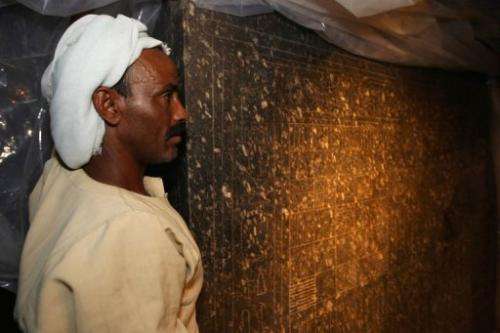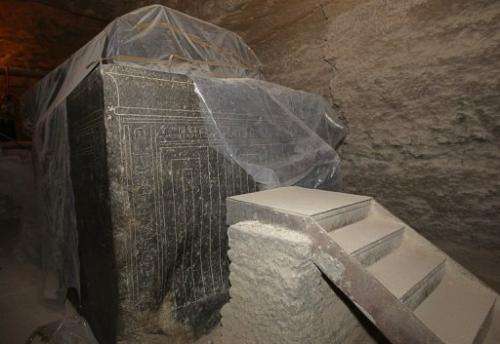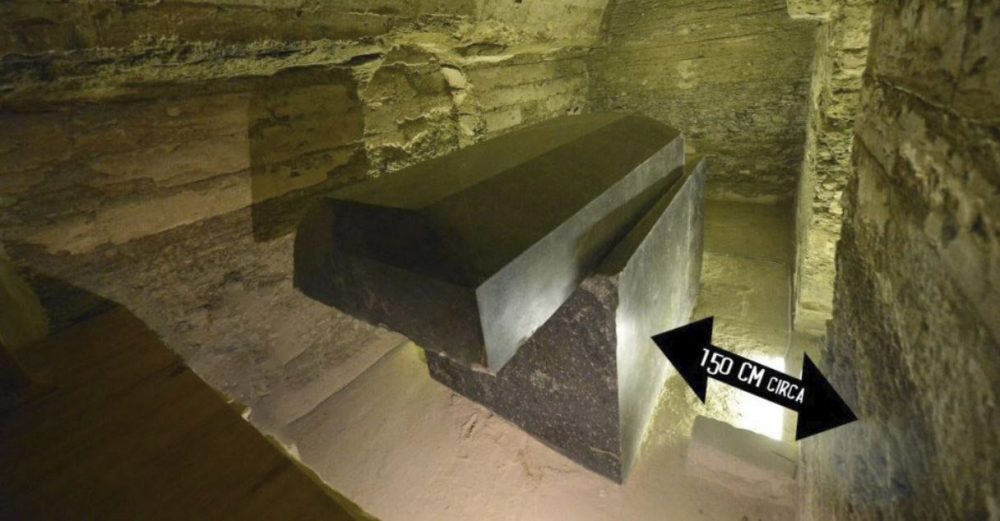Saqqara, near the ancient Egyptian capital of Memphis, is home to the oldest surviving pyramids from Pharaonic Egypt.
It was one of the necropolises preferred by the pharaohs and the ruling elite. It is one of the richest archaeological sites in ancient Egypt and is still full of surprises.

The Serapeum of Saqqara is an underground necropolis located north of Saqqara -and about 20 kilometers south of Cairo-, where the sacred bulls representing the god Apis were buried, mummified, for more than a thousand years.
In 1851, the French Egyptologist Auguste Mariette (1821-1881) rediscovered the huge sarcophagi that had contained some thirty sacred oxen, but had been looted centuries ago.

Scholars believe that the Serapeum was created by Pharaoh Amenhotep III, one of the greatest pharaohs of Egypt, who in 1386 BC, with only 12 years, ascended the throne and reigned for almost 40 years.
The sacred bulls remained buried in the same place until times of the Roman Empire.
The veneration of the bull Apis is attested as the Palermo Stone, from the First Dynasty. Apis was worshiped in Memphis, while he lived, as the incarnation of the ka of Ptah, creator god, but upon death he was assimilated to Osiris, the god of resurrection.
He was called “The Herald of Ptah.” The ritual burials of the Apis bull had their heyday belatedly. When an Apis bull died, a long and complex ritual began, which would allow the bull to be reborn. These sacred bulls were buried in sarcophagi, made of monolithic stone blocks.

The Serapeum of Saqqara is excavated twelve meters deep and consists of three passages; the main one is 68 m long, 3 m wide and 4.5 m high, with 24 side chambers carved into the rock, 6 to 11 m long and 3 to 6 m wide.
In each chamber was deposited a huge chest of basalt, black granite, pink, or limestone, weighing between sixty and eighty tons, most of about 4 m in length by 2.3 m in width and 3.3 m in height, with its respective cover of the same material. Some have engraved inscriptions.

The archaeologist Auguste Mariette discovered this legendary place in 1851. The twenty-four sarcophagi found had been looted. He also found on this site the famous statue of the “seated scribe” which is considered one of the most beautiful Egyptian sculptures.





